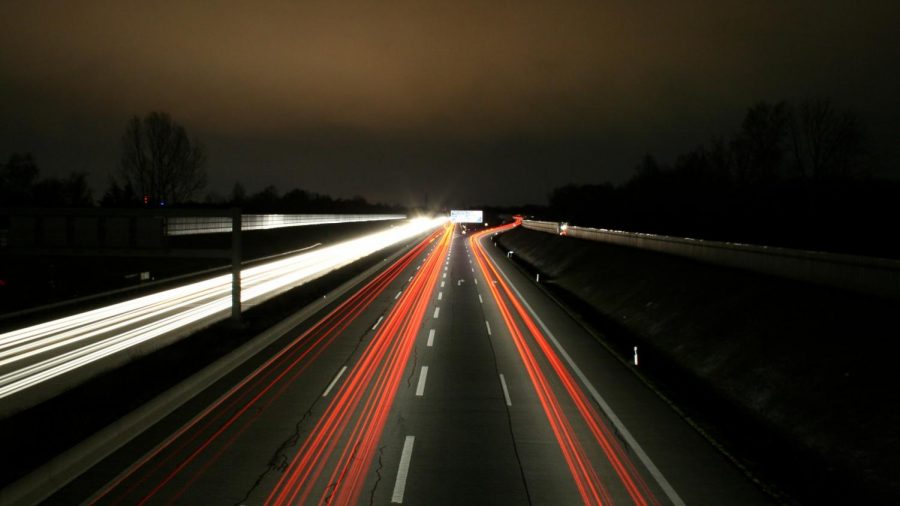Freeways Without Futures
November 13, 2017
Highways are dying, with much encouragement from modern urbanists who hope to increase the quality of a people-friendly lifestyle. Freeways that are destroyed by natural disaster or need extensive maintenance are now being intentionally neglected. The replacement of highways with slower-speed boulevards has been integrated into communities for a variety of reasons. Besides the high cost of maintaining such large roads, the main goal is to meet the request for more green space by the majority of citizens in these targeted cities.
People want a safer way to travel to school, work, and home by foot or bike. Freeways that intersect urban communities make safe travel nearly impossible. To create a more people-oriented transportation system, new avenues are being designed to include accessible resources such as bike lanes. Architects and designers that advocate for the idea of new urbanism are behind this movement, and are working towards restoring a sustainable lifestyle.
Boulevards and surface streets have proven to be much more cost effective than maintaining large multi-lane highways. The money saved, often billions of dollars according to cnu.org, can boost a city’s economy, and can be put back into the community to improve quality of life.
While the question of dispersing the heavy traffic that these highways carry on a daily basis remains, transportation experts have come to the conclusion that smaller roads are actually more efficient for spreading out highway traffic, according to CNU.
Additionally, many cities have removed their large freeways for the architectural appeal. The huge cement structures that raise highways above the ground are an eyesore. Cities are choosing to restore their original landscape by tearing down the highways that tore their picturesque layouts apart. Many of these highways have created a divide in state parks, historical destinations, and neighborhoods. With the restoration of smaller boulevards, cities hope to restore cultural boundaries created by the highways.
The new urbanism ideals have been planned to reach model cities including Boston, Milwaukee, Madrid, Paris, Portland, Seoul, and Vancouver within the next few years, according to cnu.org.
For additional information, go to www.cnu.org (Congress for the New Urbanism)


Julia Hamilton • Dec 19, 2017 at 9:56 am
I did not know highways were a problem for some people before reading this article. I think it would be better to not have as many highways, so it is safer for people to travel from one place to another.
Alanna Joachim • Dec 13, 2017 at 8:31 pm
Siobhan,
I really enjoyed this article! It was interesting to hear about new alternatives to highways and the reasons why many people oppose them. Personally, this specifically interests me because I want to major in Civil Engineering. Civil Engineers work to create new infrastructure for the country, including bridges, roads, and highways. This topic is extremely relevant to the future of civil engineering and architecture, as you mentioned. It was so interesting to explore the pros and cons of highways as opposed to normal roads and streets. Great job!
Olivia Edic • Dec 13, 2017 at 12:48 pm
Siobhan- this is a really interesting article on a subject that I had not considered. I can understand concerns about safe travel, but the logistical aspect of the highway still makes sense. A highway provides multiple lanes that fast-track people to their destinations. However, concern for the preservation of land and historical destinations is valid. Well-written article!
Jessica Psaros • Dec 8, 2017 at 11:35 am
Before reading this article I had no idea that highways were becoming such a problem. But now that I think about it, I agree that regular streets are the better way to go. considering how dangerous highways are I try to avoid them as much as possible.
Gabby Blake • Dec 7, 2017 at 7:53 am
Interestingly, the US highway system is one of the worst designed ones in the world! Personally I have an issue with freeways gentrifying neighborhoods but it was interesting to read about the other reasons people have issues with highways.
Andrew Klosowski • Dec 4, 2017 at 1:12 pm
I agree with the philosophy of relying more heavily on smaller roads then trying to maintain massive stretches of highway but, i also believe if we didn’t have these massive stretches of highway our smaller roads would be overworked and it would take longer to get to one place to another on long journeys. On the other side of that Hitler invented highways and why would we ever listen to that maniac.